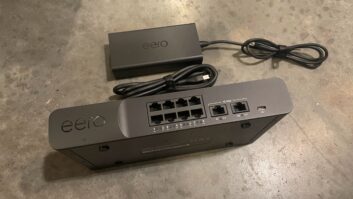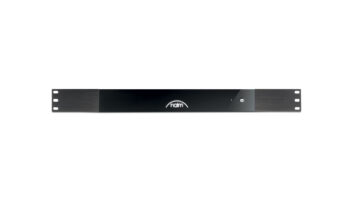
Image: ThinkStock
There seems to be a continuing and growing divide in our industry about products that are inherently viewed as custom installed (CI) versus those that are more traditionally do it yourself (DIY.) Whereas CI products generally offer extensive customization, better integration, have more tightly controlled distribution, and are often (significantly) more expensive, DIY gear is meant to be easy enough for almost anyone to install, generally offers less (or no) advanced integration, is usually widely available, and is frequently less expensive.
More specifically, many people in our industry eschew using any DIY gear, instead equating CI gear to higher/better quality that offers superior profit margins. They have adopted the sage wisdom of poet laureate Vanilla Ice, a la “Anything less than the best is a felony,” and that any product that could be installed without a trained professional is something to be despised.
Conversely, others are more open to “reaching across the lines” and incorporate some select traditionally DIY-centric products in their mix.
Who’s right? Who’s wrong? Instead, I ask, “Why can’t both live together?”
Two products that traditionally fall into this debated category are Harmony remote controls and Sonos music systems. And it seems like any time either of these products is mentioned it can raise a firestorm of comments that often tread the line of, “You’re stupid!” “No, YOU ARE!”
The thing is, the vast majority of our customers don’t really care about brands. They don’t attach name cache to the gear that we sell like they would, say, with a Rolex or a Mercedes. They just want things that work and do the things that they want them to do in the simplest, least aggravating manner possible. Do you really think it’s relevant to them which remote control brand they use to turn their TV on and change the channel? Or which device is at the head-end of their Pandora music stream? Or that they could even name the gear? (Totally unrelated, ask 10 non-industry how to pronounce the word “Onkyo” and I bet you’ll get 12-15 different responses. Have you noticed that? Not sure why that is such a hard name for people to get right.)
No. That’s stuff we care about.
So why can’t some generally considered DIY gear fit into the mix if it’s the right tool for the job?
Now, granted, it has to work, and that’s the rub. Some of these DIY products are clunky and kludgy, and none of us want to have our name or reputation saddled to garbage or install something that is just a ticking service call time bomb waiting to explode. But that certainly isn’t true for all of it.
While it’s true that no one can tell you the best thing for your business but you, and each market clearly has different needs and clientele. And, truthfully, if our showroom were in Manhattan or Beverly Hills instead of Myrtle Beach, and people walked in dripping money, perhaps I’d have a different perspective. But sometimes it can be helpful to step back from the microscope of what you’re doing and take a slightly broader, more macro view.
Let’s take the case of the simple remote control. Say you have a customer with a bedroom TV, a cable box, maybe a Blu-ray or Apple TV. If someone wanted a simple, basic handheld remote solution for this with a Crestron system, I’m told you’d be looking at $1,800 sans programming. Up until recently you’d have been looking at $950 (unprogrammed) with Control4.
As much as you want to love this industry, you’ve got to acknowledge that that sounds expensive to most consumers. Now, sure, those above systems would do a hell of a lot more than control a TV, but sometimes “TV goes on, TV changes channel, TV goes to different input” is about the extent of what someone needs and wants. And for that an $89 Harmony is palatable and perfect. Why not offer it? Throw in a $250 IR repeater kit if need be, and you’ve blown the minds of 90 percent of your customers. Without blowing their wallets.
Stalwart companies in our industry seem to be recognizing this need to come downstream with more mid-market affordability. We saw Savant’s new sub $500 Savant Remote offering at this past CEDIA, and Control4’s new $600 one-room EA1 solution that launched last week.
I’ll freely admit that my company chooses to sell both Harmony and Sonos. In the case of Harmony, it fits the bill of entry level for our clients and offers us a real price/performance stepping path from basic control ($89), gear out-of-site control (Harmony plus IR at $339), powerful one-room solution (Control4’s new EA1 at $600), to whole-house control options with full automation at more than $1,000.
And Sonos is so easy—and reliable—to sell that it’s almost like getting free money. (I wrote a whole blog on “5 Reasons Why You Should Offer Sonos” if you’re interested.) Sure, it might be for the DIY crowd, and it might not come with the margins that audio products traditionally offer, but people are going to just walk in and buy it from somewhere. Wouldn’t you like it to be from you?
For most markets, I don’t think CI and DIY have to be mutually exclusive. And if you can find a way to bring them together, you might find yourself servicing an entire new segment of clients, and closing more small jobs that add to the bottom line.






